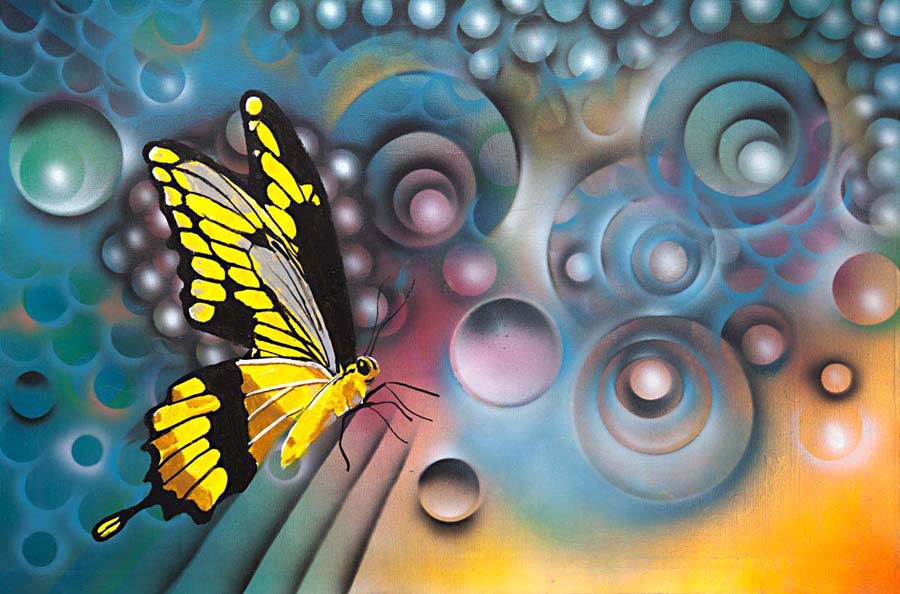art statement
Legrady bio
Legrady cv
Legrady's work
on the CCCA
Art Database
Kingston Proze
AGO Book
launch

|
Why this Butterflyr? I've thought about visual language, how written language came about when calligraphy split off from pictographs, which were the first way we recorded our thoughts. It seemed obvious that visual languages is still with us, images are everywhere, because images embody ideas that are often too subtle or too complex to put in words. Which is why they say that images are worth a thousand words, or perhaps 998 after accounting for inflation. In the 1970s when I was in graduate school they still said visual language didn't exist, so I had to write why it does, such as the notes above. Images awaken feelings, colors do the same, in fact feeling judgments are the ultimate basis for all judgments. Our primal reaction, our judgment of ideas, observations, colors, shapes, events and environments will always be feelings, which are the ur-language of all complex-celled beings. Perhaps bacteria don’t have them, they might have simple avoidance or approach instincts, but it is mostly likely that flatworms may have more variable responses, and that is the beginning of language, and the simple most basic languages are feelings. So flatworms likely have very few and very simple feelings, as they are simple creatures. Platyhelminthes (from the Greek πλατ?, platy, meaning "flat" and ?λμινς (root: ?λμινθ-), helminth-, meaning "worm")[4] is a phylum of relatively simple bilaterian, unsegmented, soft-bodied invertebrates commonly called flatworms or flat worms. Being acoelomates (having no body cavity), and having no specialised circulatory and respiratory organs, they are restricted to having flattened shapes that allow oxygen and nutrients to pass through their bodies by diffusion. The digestive cavity has only one opening for both ingestion (intake of nutrients) and egestion (removal of undigested wastes). So flatworms are simple, butterflies are more complex, the higher you go up the intellectual food chain, the more complex those feelings would be. As I mentioned before, I was fascinated with visual language, how we feel about colors and shapes. I start these paintings with colored backgrounds, in this case medium blue on the left side and yellow red on the right. Even at this backgrounds stage, the aesthetics are important. Aesthetics are not only what pleases us. We can have an aesthetic of ugliness or indifference, a neutral; aesthetic. The word describes all the feeling values we experience when seeing any style. I’ve noted that aesthetics are the vocabulary and grammar of visual art. So having laid down the color background, this is all airbrush work, I then use yogurt cups to give me a round shape, and will then spray a thin black or else white outline around the edge of the yogurt cups, to create a ball. Then spray a highlight at the top to create a globe. At each step I halt and look to see what to do next, until my instincts tell me I’m done. I did hundreds of these visual poems, exploring the results of color and shape variations. Then, since all these paintings were so different, I added a butterfly to each to bring all the canvasses into a series. Called the Butterflies, the series is really about the backgrounds and the variation of visual language. |